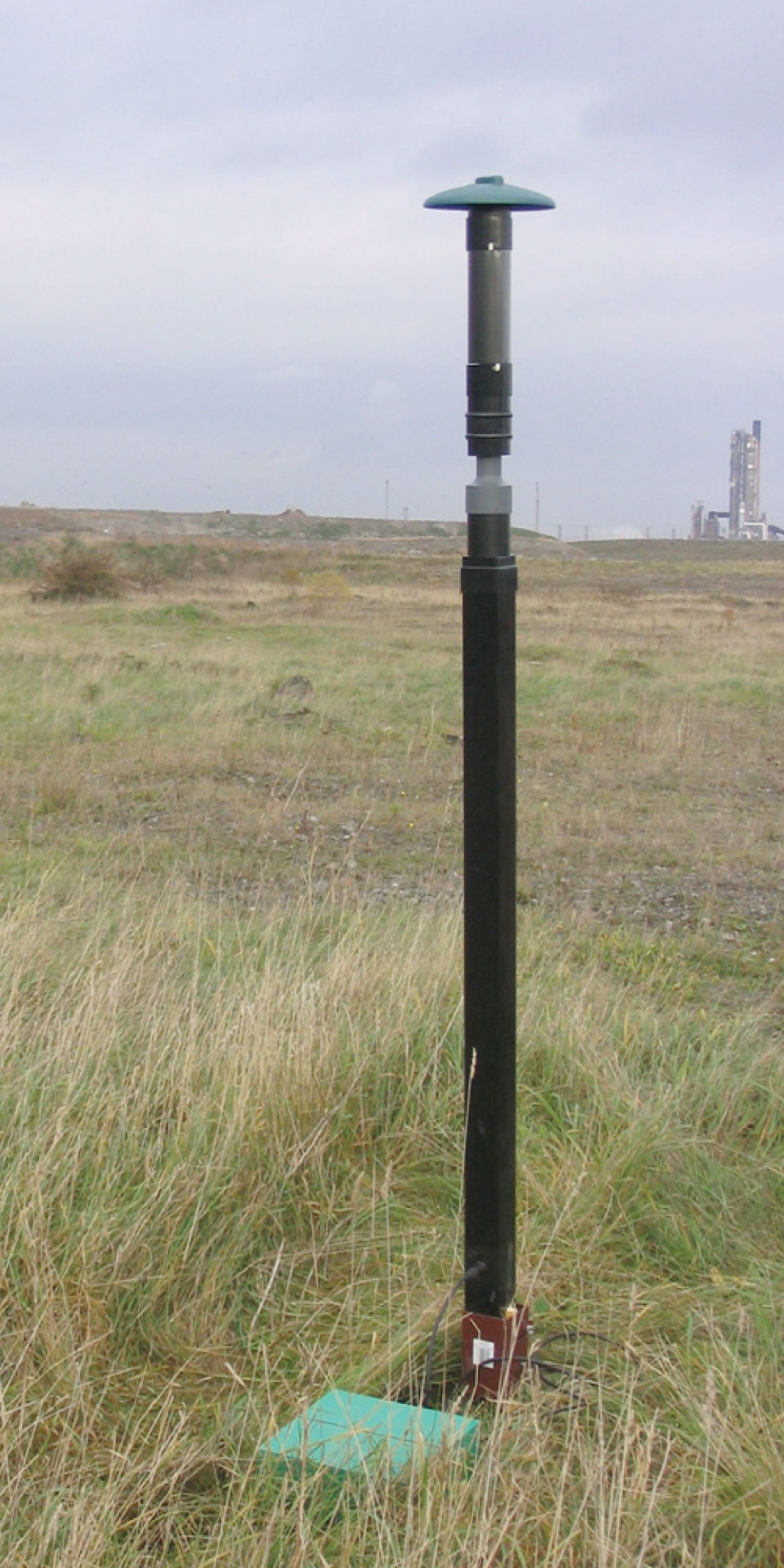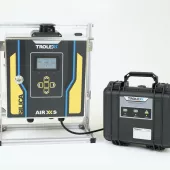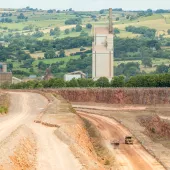Dust Monitoring

New products for recording dust emissions from quarries
By Hugh Datson and Oliver Puddle, DustScan Ltd
At this year’s Hillhead Exhibition, DustScan Ltd launched two new products to meet the increasing demands of the industry. First, as growing attention is being given to fine dust such as PM10 (dust up to 10 microns in diameter), the company introduced a new and cost-effective PM10 monitoring system that combines a filter-reference PM10 sampler with the DS-100 sticky pad directional dust gauge. Secondly, to meet the needs of those operators still obliged to monitor dust nuisance as deposited dust mass, the directional dust gauge has been combined with the traditional ‘frisbee-type’ deposition gauge to allow co-locational dust flux and dust deposition monitoring.
PM10
While it has long been recognized that finer dust particles, such as PM10, generally form only a small proportion of dust generated at quarries, their significance can be greater than first imagined. As well as the potential risk to health (PM10 can be inhaled beyond the larynx; still finer dust, such as PM4, can be drawn deep into the lungs), site operators are increasingly required to assess and monitor PM10 as part of planning conditions.
Industry guidance, such as MPS2 Annex 1: Dust, sets out the need to assess PM10 as part of an overall dust strategy. In addition, local authorities are required to review and assess air quality in their districts as part of the National Air Quality Standards (NAQS). PM10 concentrations form part of NAQS along with other airborne pollutants, such as benzene, lead and nitrogen and sulphur dioxides (often referred to as NOx and SOx).
Where the concentration of any of these pollutants exceeds NAQS, the local authority can declare an Air Quality Management Area (AQMA). This allows the local authority to pay particular attention to zones in the district where air quality is lowest – but concentrations of other pollutants in NAQS may not be at exceedence levels. Often, AQMAs are declared as a consequence of NO2 emissions from road traffic.
Many AQMAs are in heavily built-up areas, away from sites of mineral extraction, but major roads, such as busy motorways, can have AQMAs declared along their length – and minerals sites near such routes can be affected by their proximity. This is becoming increasingly significant as mineral resources, once thought marginal, are brought into production to meet demand.
Consequently, the local authority, as a statutory consultee, may require a site operator to monitor PM10 for a new minerals development even though the potential for PM10 emissions from the site is low. In addition, the growth of demolition and on-site aggregate recycling in urban settings is leading to increased requirements to monitor PM10.
In response to these demands, and the need for cost-effective baseline monitoring, the DS-500 has been developed to combine PM10 and directional dust monitoring (fig. 1). The DS-500 has been approved by the Environment Agency in PPC permits and is currently undergoing trials alongside much more expensive ‘real-time’ equipment. The new instrument incorporates two different systems; the established DS-100 sticky pad directional dust gauge system and an integrated filter-reference particulate monitor to sample PM10. The DS-500 uses a battery pack to power the internal pump and data-logger for a full week, to coincide with routine filter changes.The PM10 concentration is reported as the average for the monitoring interval and thus provides an indicative 24h average PM10 concentration during the seven-day sampling period.
The battery supply means location or availability of a fixed power supply is not an issue. A 15m mains power lead is also available. The DS-500 has a modular design using a separate inlet integrated into the DS-100 post and an interchangeable, self-regulating sampling pump with the filter module housed within the post. This means the system is unobtrusive and simple to use. The gauge has a certified PM10 size-selective inlet, and interchangeable inlets for TSP (total suspended particulates) and PM2.5 are in development.
Dust source apportionment is of particular importance to the minerals industry, especially when other dust sources, such as arable farming, landfill or construction sites or heavy industry are present nearby. Consequently, a directional PM10 gauge where the sampler is controlled by an intelligent wind vane, to permit discrimination between on-site and off-site PM10 levels, is also being developed.
Nuisance dust
Many sites still have dust nuisance conditions attached that are based on the old methods of assessing dust nuisance by mass. The importance of source apportionment and effective boundary monitoring is well known 1. It is not straightforward to attribute deposited dust to source directions. Local information on wind speed and direction helps, but research shows that there is a high degree of variability reflecting, for example, the effects of antecedent rainfall. Dust arises not just from wind blow, but from generation at source 2.
Until the significance of monitoring dust flux rather than dust deposition at site boundaries is fully recognized, the DS-100F has been developed. The DS-100F combines the DustScan directional gauge and the frisbee deposition gauge in one unit (fig. 2). This allows simultaneous measurement of dust flux and dust deposition.
DustScan Ltd is an independent dust consultancy set up by Prof. Geoffrey Walton in 2004 to provide dust monitoring, dust analysis and expert services. The firm is based in Charlbury, near Oxford, and carries out dust monitoring, air-quality assessments and workplace dust monitoring, as well as consultancy work for a wide range of industry and regulatory bodies. For more information tel: (01608) 810110.
References
- WALTON, G., and H. DATSON: ‘Effective Dust Monitoring’, Quarry Management, 2005, vol. 32, no.10, pp45–46.
- WALTON, G., DATSON, H., and D. WARDROP: ‘Dust movement from and into quarries’, Proc. 13th Extractive Industry Geology Conference, Edinburgh, 2006.








